Chapter 7: TCP/IP
ATHENA
Objective
Converting
• Decimal to binary ( binary to decimal) • Decimal to hexadecimal (hexadecimal to decimal) • Binary to hexadecimal (hexadecimal to binary)
Understanding TCP/IP
• IP address and Subnetting
Protocol for TCP/IP
ATHENA
The Binary System
Computing devices communicate with 1s
and 0s
A groups of 8 bits = 1 byte Binary numbers are based on the powers of 2 because there are only 2 symbols: 0 and 1
Binary can be converted to decimal in a similar
ATHENA
way that decimal numbers are figured
The Binary System (2)
Binary can be converted to decimal in a similar
Example: 1010
way that decimal numbers are figured
= (1x23)+(0x22)+(1x21)+(0x20)
= (1x8)+(0x4)+(1x2)+(0x1)
= 8 + 0 + 2 + 0
ATHENA
1010 = 10
The Decimal System
Humans use the decimal number system base on
10 symbols are used: 0,1,2,3,4,5,6,7,8,9
the powers of 10
ATHENA
In a decimal number, each symbol represents 10 raised to a power according to its position that is then multiplied by that position
The Decimal System (2)
Example:
261 = (2 x 102) + (6 x 101) + (1 x 100)
(2 x 100) + (6 x 10) + (1 x 1)
ATHENA
261 = 200 + 60 + 1
The Decimal System (3)
Converting decimal to binary:
• Example: 49
– 49/2 = 24 with a remainder of 1 – 24/2 = 12 with a remainder of 0 – 12/2 = 6 with a remainder of 0 – 6/2 = 3 with a remainder of 0 – 3/2 = 1 with a remainder of 1 – 1/2 = 0 with a remainder of 1 – 49 = 110001
ATHENA
The Hexadecimal System
A hexadecimal system based on power of the
16 symbols are used:
number 16
Example:
0,1,2,3,4,5,6,7,8,9,A,B,C,D,E,F
7FA2 = (7x163) + (Fx162) + (Ax161) + (2x160)
7FA2 = 28672 + 3840 + 160 + 2
ATHENA
7FA2 = 32674
The Hexadecimal System (2)
Converting decimal to hexadecimal:
• Example: 127
– 127/16 = 7 with a remainder of 15 (F) – 127 = 7F
ATHENA
The Hexadecimal System (3)
Converting hexadecimal to binary by divide
0
1
2
3
Binary Dec Hexa 0000 0 0001 1 0010 2 0011 3 0100 4
4
ATHENA
binary to 4 bit groups:
The Hexadecimal System (4)
5
6
7
8
Binary Dec Hexa 0101 5 0110 6 0111 7 1000 8 1001 9
9
ATHENA
The Hexadecimal System (5)
A
B
C
D
E
Binary Dec Hexa 1010 10 1011 11 1100 12 1101 13 1110 14 1111 15
F
ATHENA
The Hexadecimal System (6)
Example:
1101 1010 0100 0110 = DA46
ATHENA
C9F7 = 1100 1001 1111 0111
IP Addresses
An IP (Internet Protocol) address is a unique identifier
for a node or host connection on an IP network. An IP address is a 32 bit binary number usually
represented as 4 decimal values, each representing 8 bits
Range 0 to 255 (known as octets) separated by decimal
points
Example: 140.179.220.200
ATHENA
Introducing IP Addresses
• Unique addressing allows communication
between end stations.
• Path choice is based on destination address. Location is represented by an address
ATHENA
IP Addressing
ATHENA
IP Addresses (2)
Every IP address consists of two parts
• One identifying the Net ID (network identifier) • One identifying the Host ID (host identifier)
ATHENA
Host Addresses
ATHENA
Network ID and Host IDs
A Network ID is assigned to an organization by
Host IDs are assigned locally by a system
a global authority
Both the Network ID and the Host ID are used
administrator
ATHENA
for routing
IP Address Classes
ClassClass AA
HostID HostID 00 NetID NetID
1010 NetID NetID HostID HostID
BB
110110 HostID HostID NetID NetID
CC
1110 Multicast Address Multicast Address
DD
8 bits
8 bits
8 bits
8 bits
ATHENA
IP Address Classes
Class A:
• 126 possible network ID • 16.777.214 host IDs per network ID • addresses begin with 0xxx, or 1 to 126 decimal
Class B:
• 16384 possible network IDs • 65.534 host IDs per network ID • addresses begin with 10xx, or 128 to 191 decimal
ATHENA
IP Address Classes (2)
Class C:
• 2 million possible network IDs(2.097.152) • about 254 host IDs per network ID • addresses begin with 110x, or 192 to 223 decimal
ATHENA
Special Addresses
Addresses beginning with 01111111, or 127 decimal, are reserved for loopback and for internal testing on a local machine ( ping 127.0.0.1)
10.0.0.0 – 10.255.255.255, 172.16.0.0 –
ATHENA
172.31.255.255, 192.168.0.0 – 192.168.255.255: unused Internet address
Host and Network Addresses
A single network interface is assigned a single IP
A host may have multiple interfaces, and
address called the host address
Hosts that share a network all have the same IP
therefore multiple host addresses
ATHENA
network address (the network ID)
Host and Network Addresses (2)
ATHENA
In the example, 140.179.220.200 is a Class B address so by default the Network part of the address (also known as the Network Address) is defined by the first two octets (140.179.x.x) and the Host part is defined by the last 2 octets (x.x.220.200)
IP Broadcast and Network Addresses
An IP broadcast addresses ( that is send to all hosts on the network) has a host ID of all 1s An IP address that has a host ID of all 0s is
ATHENA
called a network address and refers to an entire network
Subnet Mask
Default subnet masks: • Class A : 255.0.0.0
(11111111.00000000.00000000.00000000)
• Class B : 255.255.0.0
(11111111.11111111.00000000.00000000)
• Class C : 255.255.255.0
(11111111.11111111.11111111.00000000)
ATHENA
Subnet Mask (2)
Applying a subnet mask to an IP address to
Performing a bitwise logical AND operation between the IP address and the subnet mask results in the Network Address ( also call Network Number)
ATHENA
identify the NetID and HostID • The network bits are presented by the 1s in the mask • The host bits are presented by the 0s
Subnet Mask (3)
For example:
• 10001100.10110011.11110000.11001000
(140.179.240.200 Class B IP Address) • 11111111.11111111.00000000.00000000 (255.255.000.000 Default Class B Subnet) • mask • 10001100.10110011.00000000.00000000
(140.179.000.000 Network Address)
ATHENA
Addressing Without Subnets
ATHENA
Subnet Addressing
ATHENA
Subnet Addresses
An organization can subdivide it’s host address
To create subnet address, administrator borrows
space into groups called subnets
some bits from host field
ATHENA
1010 NetID NetID HostID SubnetID HostID SubnetID
Subnet Mask
ATHENA
Subnets not in use—the default
ATHENA
Subnet Mask Without Subnets
Network number extended by eight bits
ATHENA
Subnet Mask with Subnets
Network number extended by ten bits
ATHENA
Subnet Mask with Subnets
An Example
You are assigned a Class C network number of 200.133.175.0 (apologies to anyone who may actually own this domain address). You want to utilize this network across multiple small groups within an organization. You can do this by subnetting that network with a subnet address
ATHENA
An Example (2)
We will break this network into 14 subnets of 14 nodes each. This will limit us to 196 nodes on the network instead of the 254 we would have without subnetting, but gives us the advantages of traffic isolation and security. To accomplish this, we need to use a subnet mask 4 bits long
ATHENA
An Example (3)
Recall that the default Class C subnet mask is 255.255.255.0
Extending this by 4 bits yields a mask of 255.255.255.240
(11111111.11111111.11111111.00000000 binary)
ATHENA
(11111111.11111111.11111111.11110000 binary)
An Example (4)
This gives us 16 possible network numbers, 2 of which cannot be used:
Subnet bits
Host Addresses
Network Number
Broadcast Address
0000
200.133.175.0
Reserved
None
0001
200.133.175.16
.17 thru .30
200.133.175.31
0010
200.133.175.32
.33 thru .46
200.133.175.47
ATHENA
An Example (5)
Subnet bits
Host Addresses
Network Number
Broadcast Address
….
….
….
….
…..
…..
…..
…..
1101
209 thru .222
200.133.175.20 8
200.133.175.22 3
1110
225 thru .238
200.133.175.22 4
200.133.175.23 9
1111
Reserved
None
200.133.175.24 0
ATHENA
Protocol
Protocols are the rules and procedures for
communicating
Three points to think about protocols
• Many protocols, each has it sown advantages and restrictions • Protocols work at various OSI layers, the layer in which it works
describes its function
• Several may work together in a protocol stack or suite: Levels in protocol stack map or correspond to the layers of the OSI model
ATHENA
TCP/IP
Transmission Control Protocol/ Internet
Provides routable, enterprise networking
Protocol
Access to worldwide internet Protocols written for TCP/IP:
• SMTP , FTP, SNMP
ATHENA
protocol
TCP/IP (2)
The function of the TCP/IP protocol stack, or suite, is the transfer of information from one network device to another. In doing so, it closely maps the OSI reference model in the lower layers, and supports all standard physical and data link protocols
ATHENA
TCP/IP (3)
DNS (Domain Name System) is a system used in the Internet for translating names of domains and their publicly advertised network nodes into addresses
WINS (Windows Internet Naming Service) is a Microsoftdeveloped standard for Microsoft Windows NT that automatically associates NT workstations with Internet domain names
ATHENA
TCP/IP (4)
POP3 (Post Office Protocol) is an Internet
ATHENA
standard for storing email on a mail server until you can access it and download it to your computer. It allows users to receive mail from their inboxes using various levels of security
TCP/IP (5)
SMTP (Simple Mail Transport Protocol) governs
SNMP (Simple Network Management Protocol) is a protocol that provides a means to monitor and control network devices, and to manage configurations, statistics collection, performance and security
ATHENA
the transmission of email over computer networks. It does not provide support for transmission of data other than plain text
TCP/IP (6)
FTP (File Transfer Protocol) is a reliable
HTTP (Hypertext Transfer Protocol) is the
connectionoriented service that uses TCP to transfer files between systems that support FTP
ATHENA
Internet standard that supports the exchange of information on the World Wide Web, as well as on internal networks. It supports many different file types, including text, graphic, sound, and video
TCP/IP (7)
Telnet is a standard terminal emulation protocol
ATHENA
used by clients for the purpose of making remote terminal connections to Telnet server services; enables users to remotely connect to routers to enter configuration commands
TCP/IP (8)
Ping (Packet Internet Groper) is a diagnostic
Traceroute is a program that is available on
utility used to determine whether a computer is properly connected to devices
ATHENA
many systems, and is similar to PING, except that traceroute provides more information than PING
Summary
This topic examined: • Common Protocols • TCP/IP • IP address and Subnetting
ATHENA

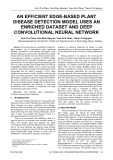

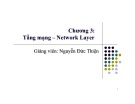
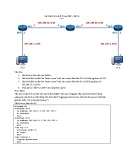
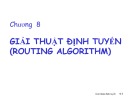

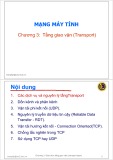






![Đề thi học kì 2 môn Nhập môn Mạng máy tính [kèm đáp án]](https://cdn.tailieu.vn/images/document/thumbnail/2025/20251014/lakim0906/135x160/23811760416180.jpg)



![Câu hỏi trắc nghiệm Mạng máy tính: Tổng hợp [mới nhất]](https://cdn.tailieu.vn/images/document/thumbnail/2025/20251001/kimphuong1001/135x160/15231759305303.jpg)
![Câu hỏi ôn tập An toàn mạng môn học: Tổng hợp [mới nhất]](https://cdn.tailieu.vn/images/document/thumbnail/2025/20250919/kimphuong1001/135x160/30511758269273.jpg)






